by Lorri | May 5, 2010 | UnCorked
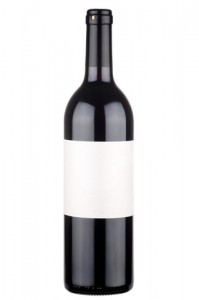 Often the intimidation many wine drinkers encounter can be linked to confusing labels. This is understandable when you consider wine labels can include confusing classifications, town names and unfamiliar producers.
Often the intimidation many wine drinkers encounter can be linked to confusing labels. This is understandable when you consider wine labels can include confusing classifications, town names and unfamiliar producers.
In the United States, wine falls under the regulation of the Alcohol and Tobacco Tax and Trade Bureau, which regulates its labeling. The bureau reviews more than 100,000 wine labels each year to ensure that consumers get adequate information. Investigators also routinely confirm that industry members are following labeling and production standards.
American wine labels tend to be easier to understand, with more direct wording on the label than European labels. And U.S. labeling is even more straightforward when you better understand what is being regulated.
On U.S. labels the word “Reserve,” unlike in other countries, does not have a specific meaning. It can refer to a winery’s favorite vineyard, the use of barrel aging or even a special bottling from the winemaker.
“Estate Bottled,” unlike “reserve,” has a specific meaning. “Estate Bottled” means 100 percent of the wine came from grapes grown on land owned by the winery. The winery must also crush, ferment, finish, age and bottle the wine on the premises.
The “Appellation of Origin” refers to the place in which the grapes used in the wine were grown. It can be a state, county or viticulture area. If it is a country, state or county, at least 75 percent of the wine must be produced from grapes grown in the place named.
An “American Viticulture Area” (AVA) is a region in the United States with features that set it apart from other growing areas. Usually soil, climate and aspect are considerations when adding AVA designations. These appellations must use 85 percent or more grapes grown in the growing area. Sonoma Valley, Napa Valley and Willamette Valley are examples of American Viticulture Areas.
Wine labels will generally list the dominant grape used in the wine. For example, chardonnay, cabernet sauvignon or merlot. If the winery uses the grape name, it means at least 75 percent of the grapes used to make the wine are from that variety, and 75 percent were grown in the appellation listed on the label. However, labels are not required to list the dominant grape, so many wineries use a more broad listing of “red,” “white” or “table” wine.
When you see “vintage” or year the wine was bottled, if the label uses a state or county as an appellation of origin (where the grapes were grown) then 85 percent of the grapes must be from that year, but when using a specific viticultural area the percentage is raised to 95 percent.
by Lorri | Apr 28, 2010 | UnCorked
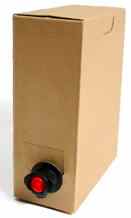 Boxed wine has been the topic of many heated debates.
Boxed wine has been the topic of many heated debates.
But depending on your expectations, there are goodquality boxed wines available that, if given a chance, might move discerning wine drinkers off their blanket rejection of the product.
In 1965, Australian winemaker Thomas Angove, seeking a more practical and cheaper method of packaging wine, came up with a resealable plastic bag in a cardboard box. It evolved into our modern boxed wine. Angove died at age 92 in March.
“Boxed” wine is packaged in a sealed bag, usually inside a cardboard box with a spigot. As wine is drawn out the flexible bag collapses, protecting the remaining wine from air spoilage. The packaging also offers efficiencies in storage and transportation.
Boxed wine offers some advantages over traditional glass bottles — it is easy to open and will stay fresh for weeks after it is opened.
Consumers interested in boxed wines will find many price and quality options to explore, and the past 10 years have seen marked improvement in packaging and choices.
These wines come in 3-liter boxes, making them all VALUES.
- 2008 Bota Box Shiraz, California (about $16 retail)
- 2008 Black Box Merlot, California (about $25 retail)
- 2008 Fish Eye Pinot Grigio, California (about $19 retail)
- 2008 Red Truck Mini Barrel, California (about $29 retail)
by Lorri | Apr 21, 2010 | UnCorked
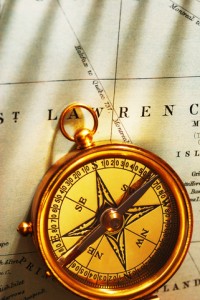 The wine world is full of many magnificent red grapes beyond the well known and popular. Just because hundreds of bottles of cabernet sauvignon and merlot line the retail shelves doesn’t mean other red grapes are inferior in flavor and quality. These “other” grapes are often hidden away in blends or from regions that don’t use a grape’s name on the label. But there’s no need to drink the same kind of wine day after day. Enjoy the classics but dare to explore the different.
The wine world is full of many magnificent red grapes beyond the well known and popular. Just because hundreds of bottles of cabernet sauvignon and merlot line the retail shelves doesn’t mean other red grapes are inferior in flavor and quality. These “other” grapes are often hidden away in blends or from regions that don’t use a grape’s name on the label. But there’s no need to drink the same kind of wine day after day. Enjoy the classics but dare to explore the different.
BARBERA
Barbera for centuries has played second fiddle to the more famous Italian grape, Barolo. Barbera grows throughout Italy, but it is in the vineyards of Piedmont that for centuries the most concentrated and complex examples of this grape have been grown. Today, the grape has extended well beyond its deep-rooted history into California, Australia and Argentina.
Barbera can be fresh and fruity with cherry flavors or made in a serious, full-bodied style with a plummy spice taste. And as with most Italian grapes, its high acid and soft tannins make it an almost perfect match with many foods.
THE VALUE
- 2007 Michele Chiarlo Barbera d’Asti, Italy (about $15 retail)
THE SPLURGE
- 2007 Renwood Barbera (Amador County), California (about $28 retail)
MALBEC
Originally from Cahors, France, malbec was traditionally used as a blending partner. Following a devastating frost in 1956, it never fully recovered, and most vineyards were replanted with grapes that had become more fashionable, such as merlot. But malbec found a new home in Argentina and Chile not as a blend, but as a thrilling single varietal. Its deep inky red color boasts lush fruit flavors with smooth tannins, making it easy to love. Since most South American wines are undervalued, it makes a tremendous bargain for wine drinkers.
THE VALUE
- 2007 Trapiche Malbec, Argentina (about $9 retail)
THE SPLURGE
- 2007 Francis Coppola Malbec, California (about $19 retail)
CABERNET FRANC
Cabernet franc is the father of the noble cabernet sauvignon (a cross with sauvignon blanc) but has never received much respect from the wine world. Perhaps it’s because, as with many French wines, consumers just don’t know which specific grapes are in the wine.
Cabernet franc is blended in many of the world’s finest wines — Chateau Cheval-Blanc, Ausone, Belair and Lefeur, to name a few. It’s used in blends to smooth and tame the aggressive and powerful cabernet sauvignon or to add a fragrant lift.
But it’s also mouthwatering on its own in The Loire Valley of France, the gracious home to this grape in Borgueil and Chinon. At its best, cabernet franc has fragrant aromas of black cherry, chocolate and violets and flavors of raspberries.
THE VALUE
- 2007 Remy Pannier Chinon Cabernet Franc, France (about $20 retail)
THE SPLURGE
- 2007 Alexander Valley Vineyards Cabernet Franc, California (about $24 retail)
by Lorri | Apr 14, 2010 | UnCorked
 One of the most intimidating aspects of wine could be mastering the correct pronunciations of labels and lists. Many of us, at one time or another, have been confronted with an unpronounceable wine list and faced the options of treading on in humiliation phonetically, ordering by pointing or settling for the house wine in frustration.
One of the most intimidating aspects of wine could be mastering the correct pronunciations of labels and lists. Many of us, at one time or another, have been confronted with an unpronounceable wine list and faced the options of treading on in humiliation phonetically, ordering by pointing or settling for the house wine in frustration.
In the past, unless you traveled to wine regions or studied the language, few resources were available for you to brush up on your skills. Today there are many, from online audio guides to reference books. One of my favorites is Barry Brothers and Rudd of London, bbr.com/pronunciation. The Web site offers audio pronunciation of Bordeaux properties. A great resource to conquer the intimidation of pronouncing wine names such as Chateau la Croix de Chenevelle de Pomerol. Another helpful site is wineloverspage.com/lexicon. Below are some commonly difficult to pronounce wines and how to say them.
WHITE GRAPES
Chenin Blanc: shen-anblonk Gewurztraminer: gervertz-tra-me-ner Pinot Grigio: pee-no greejee-o Riesling: reez-ling Sauvignon Blanc: sov-inyon blonk Semillon: semee-on Viognier: vee-on-yea
RED GRAPES
Nebbiolo: nee-bee-olo Sangiovese: san-gee-ovay-zeh Tempranillo: tem-pranee-o Mourvedre: mor-ved-ra Pinot Meunier: pee-no moon-yea
by Lorri | Apr 7, 2010 | UnCorked
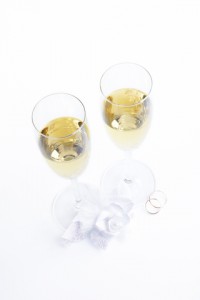 Many brides and bridegrooms today are looking at beverage options beyond traditional punch at their receptions. Wine is often atop the list and can play a significant part in the planning for the big day.
Many brides and bridegrooms today are looking at beverage options beyond traditional punch at their receptions. Wine is often atop the list and can play a significant part in the planning for the big day.
Champagne and sparkling wines are staples at most wedding receptions. Unfortunately, this can be the most expensive part of your wine budget, sometimes costing as much as $80 a bottle, so consider options outside of the traditional Champagne region. Prosecco is the Italian version with a refreshing light-bodied style.
For more Champagne alternatives look at sparkling wines from countries such as Australia or places closer to home like California. And, as most wedding budgets demand, if you are looking for additional savings, serve the bubbly only during the toast or cake cutting rather than throughout the entire reception.
Other than bubbly, you should also consider serving one red wine and one white wine, especially if the reception includes hors d’oeuvres or a meal. In white wines, don’t overlook sauvignon blanc or pinot grigio with their fresh, crisp and light-bodied flavor. They are much different than the typical white wine served at many receptions, chardonnay. But if chardonnay is your choice, look for unoaked styles which are much more refreshing than the buttery and toasty versions that overwhelm many foods. In red wines, merlot is usually the most crowd-pleasing style with its fruity, soft taste. Other options include pinot noir and dry rose.
How much wine to buy depends on a few factors: the time of day, the foods being served and of course, the number of guests. A standard 750ml bottle contains five servings, and most caterers plan on each guest consuming two glasses every two hours. This calculation usually allows for those who will drink less, more and some not at all. If your reception is during the day, guests generally consume less wine than at an evening reception. Guests at multiple course seated dinners will usually consume more than at a buffet style service.
THE VALUES
- 2007 Bodega Norton Merlot, Argentina (about $12 retail)
- 2008 Villa Maria Unoaked Chardonnay, New Zealand (about $15 retail)
- 2008 Brancott North Island Pinot Grigio, New Zealand (about $15 retail)
- 2008 Banfi Centine Rose, Italy (about $14 retail)
THE SPLURGES
- 2007 Chateau Ste. Michelle Merlot, Washington (about $24 retail)
- 2006 Bell Merlot (Yountville), California (about $38 retail)
- NV Zardetto Prosecco, Italy (about $22 retail)
by Lorri | Mar 31, 2010 | UnCorked
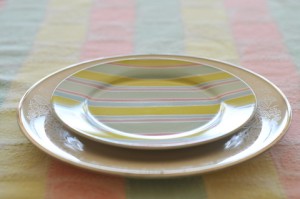 The Easter dinner is an annual feast rivaled only by Thanksgiving and Christmas. Most foods gracing the celebration vary from home to home but likely offer an array of tastes and textures. A traditional Easter menu often centers on either a savory baked ham or a succulent leg of lamb.
The Easter dinner is an annual feast rivaled only by Thanksgiving and Christmas. Most foods gracing the celebration vary from home to home but likely offer an array of tastes and textures. A traditional Easter menu often centers on either a savory baked ham or a succulent leg of lamb.
Ham is usually prepared with a sweet glaze, balancing the saltiness of the cured meat. These competing salt and sugar tastes can easily accentuate bitterness and tannins found in some wines. Choose red wines without over-powering tannins and white wines without searing acidity. A few to consider are merlot, pinot noir, tempranillo, Riesling, gruner veltliner, chenin blanc or chardonnay.
THE VALUES
- 2008 Clean Slate Riesling, Germany (about $13 retail)
- 2008 Lindemans Bin 77 Semillon Chardonnay, Australia (about $10 retail)
- 2007 Marques de Riscal Tempranillo, Spain (about $13 retail)
- 2007 Concannon Pinot Noir, California (about $12 retail)
THE SPLURGES
- 2008 Spann Vineyards Chardonnay-Viognier, California (about $20 retail)
- 2007 Gloria Ferrer Etesian Pinot Noir, California (about $19 retail)
Lamb offers its own challenges. Simple, lightly seasoned preparations pair easily with pinot noir and its light-bodied style.
But lamb recipes involving heavy spices or sauces can create a rich, robust and earthy taste.
The richer dish pairs well with a wine of good tannin structure. Consider serving a malbec, shiraz, syrah or merlot.
THE VALUES
- 2007 Finca Los Prados Malbec, Argentina (about $9 retail)
- 2008 Jacob’s Creek Shiraz, Australia (about $12 retail)
- 2007 181 Merlot, California (about $13 retail)
THE SPLURGES
- 2007 Don Manuel Villafane Malbec, Argentina (about $21 retail)
- 2007 Peter Lehmann Shiraz, Australia (about $18 retail)
 Often the intimidation many wine drinkers encounter can be linked to confusing labels. This is understandable when you consider wine labels can include confusing classifications, town names and unfamiliar producers.
Often the intimidation many wine drinkers encounter can be linked to confusing labels. This is understandable when you consider wine labels can include confusing classifications, town names and unfamiliar producers. Boxed wine has been the topic of many heated debates.
Boxed wine has been the topic of many heated debates. The wine world is full of many magnificent red grapes beyond the well known and popular. Just because hundreds of bottles of cabernet sauvignon and merlot line the retail shelves doesn’t mean other red grapes are inferior in flavor and quality. These “other” grapes are often hidden away in blends or from regions that don’t use a grape’s name on the label. But there’s no need to drink the same kind of wine day after day. Enjoy the classics but dare to explore the different.
The wine world is full of many magnificent red grapes beyond the well known and popular. Just because hundreds of bottles of cabernet sauvignon and merlot line the retail shelves doesn’t mean other red grapes are inferior in flavor and quality. These “other” grapes are often hidden away in blends or from regions that don’t use a grape’s name on the label. But there’s no need to drink the same kind of wine day after day. Enjoy the classics but dare to explore the different. One of the most intimidating aspects of wine could be mastering the correct pronunciations of labels and lists. Many of us, at one time or another, have been confronted with an unpronounceable wine list and faced the options of treading on in humiliation phonetically, ordering by pointing or settling for the house wine in frustration.
One of the most intimidating aspects of wine could be mastering the correct pronunciations of labels and lists. Many of us, at one time or another, have been confronted with an unpronounceable wine list and faced the options of treading on in humiliation phonetically, ordering by pointing or settling for the house wine in frustration. Many brides and bridegrooms today are looking at beverage options beyond traditional punch at their receptions. Wine is often atop the list and can play a significant part in the planning for the big day.
Many brides and bridegrooms today are looking at beverage options beyond traditional punch at their receptions. Wine is often atop the list and can play a significant part in the planning for the big day. The Easter dinner is an annual feast rivaled only by Thanksgiving and Christmas. Most foods gracing the celebration vary from home to home but likely offer an array of tastes and textures. A traditional Easter menu often centers on either a savory baked ham or a succulent leg of lamb.
The Easter dinner is an annual feast rivaled only by Thanksgiving and Christmas. Most foods gracing the celebration vary from home to home but likely offer an array of tastes and textures. A traditional Easter menu often centers on either a savory baked ham or a succulent leg of lamb.